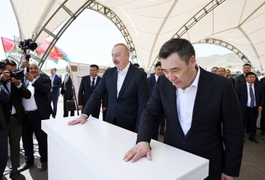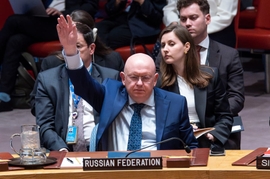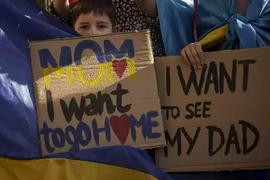The Azerbaijani authorities have released three years’ worth of data concerning the victims of landmine explosions in the territories that were liberated from Armenian occupation in 2020.
Hikmet Hajiyev, the Assistant to the President of Azerbaijan and the Head of the Foreign Policy Affairs Department of the Presidential Administration, took to X (formerly Twitter) on Tuesday to express his concern over the “terrifying” number of Azerbaijanis who have lost their lives due to Armenia’s systematic and deliberate use of landmines as a terror tactic.
“Armenia and illegal puppet junta regime continue to implant landmines produced in Armenia along the whole perimeters of ’grey zone’,” Hajiyev wrote, referring to the parts of the Karabakh region of Azerbaijan where illegal Armenian armed detachments are stationed.
According to the data published by Hajiyev, between November 10, 2020, and September 11, 2023, a total of 306 Azerbaijanis fell victim to landmine explosions, resulting in 55 fatalities and 251 injuries. Of these casualties, 42 were civilians who lost their lives in mine accidents, while 101 suffered injuries of varying degrees. Among the military personnel, 13 lost their lives, and 150 sustained injuries.
Hajiyev also pointed out the staggering toll over the years, stating that since 1991, a total of 3,385 Azerbaijanis have become victims of landmines planted by Armenia, with 357 of them being young individuals and 38 being females.
Meanwhile, during a meeting with the UN High Commissioner for Human Rights, Volker Türk, on Wednesday, Jeyhun Bayramov, the Foreign Minister of Azerbaijan, highlighted that hundreds of thousands of mines laid by Armenia in these previously occupied territories continue to claim the lives of innocent people, impede reconstruction and development efforts, and hinder the return of former internally displaced individuals to their native lands.
The Karabakh (Garabagh) and East Zangazur regions of Azerbaijan have been heavily mined by Armenia’s forces since the 1990s. Following the dissolution of the Soviet Union in 1991, Armenia launched a full-scale military assault against Azerbaijan. The devastating war persisted until a ceasefire was signed in 1994 and led to Armenia’s occupation of 20 percent of Azerbaijan’s internationally recognized territories. During the conflict, over 30,000 Azerbaijanis lost their lives, and one million were forcibly displaced from their homes in a brutal ethnic cleansing campaign perpetrated by Armenia.
On September 27, 2020, the long-standing conflict between the two countries rekindled after Armenia’s forces, illegally deployed in the occupied Azerbaijani territories, shelled both military positions and civilian settlements in Azerbaijan. Over the course of a 44-day counter-attack, Azerbaijani forces liberated more than 300 settlements, including the cities of Jabrayil, Fuzuli, Zangilan, Gubadli, and Shusha, from Armenian occupation. The war ended with the signing of a tripartite statement on November 10, 2020, by Armenia, Azerbaijan and Russia. Under the statement, Armenia also returned the occupied Aghdam, Kalbajar, and Lachin districts to Azerbaijan.
Since the cessation of hostilities, the Azerbaijani government has been actively engaged in demining operations in the liberated territories to facilitate the return of internally displaced Azerbaijanis to their homes. However, these efforts face significant challenges due to Armenia’s refusal to provide maps detailing the locations of landmines.
According to the Azerbaijani National Agency for Mine Action, the maps provided by Armenia are only 2 percent effective in aiding demining efforts. International experts estimate that it will require nearly 30 years and $25 billion to fully address the issues associated with demining in the region.







 President Ilham Aliyev shed light on the evolving contours of the peace process with Armenia during an international conference in Baku this week. ...
President Ilham Aliyev shed light on the evolving contours of the peace process with Armenia during an international conference in Baku this week. ...
 Turkmen President Serdar Berdimuhamedow and British Secretary of State for Foreign Affairs, Commonwealth Affairs, and Development David Cameron dis...
Turkmen President Serdar Berdimuhamedow and British Secretary of State for Foreign Affairs, Commonwealth Affairs, and Development David Cameron dis...
 Russia and Ukraine have engaged in direct negotiations facilitated by Qatar to address the exchange of children affected by the ongoing conflict.
Russia and Ukraine have engaged in direct negotiations facilitated by Qatar to address the exchange of children affected by the ongoing conflict.



